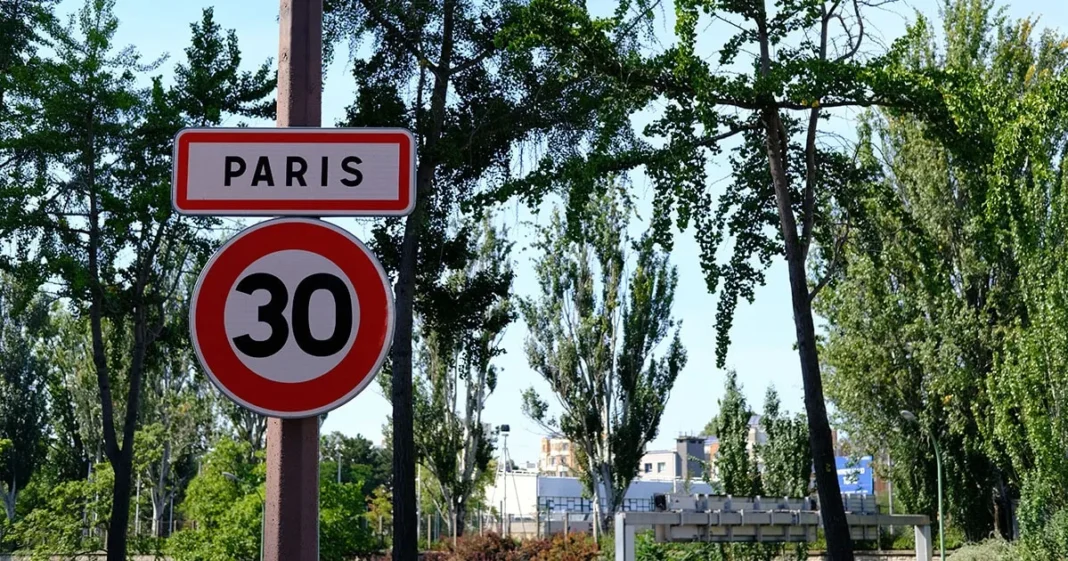PARIS — The speed limit on Paris’ busy Boulevard Périphérique will drop from 70 km/h to 50 km/h as of October 10, 2024, in a move designed to reduce noise pollution and improve air quality for the 550,000 residents living near the ring road.
The change, championed by Paris mayor Anne Hidalgo, is part of the city’s ongoing efforts to enhance quality of life, but it has sparked backlash from drivers and political opponents.
The decision will affect the entire 35-kilometer stretch of the Périphérique, which serves as a major thoroughfare for around 1.2 million vehicles every day, primarily from the Île-de-France region surrounding Paris.
City officials say the reduction in speed will result in a notable decrease in urban noise and pollution levels, particularly benefiting those who live near the heavily-trafficked road.
“When you reduce speed, you reduce noise for all the people who live near this ring road,” said David Belliard, Paris’ deputy mayor in charge of transportation and an advocate for ecological policies. “We’re going to give them a better quality of life. The right to sleep is extremely important.”
Impact on Noise and Air Quality
According to BruitParif, an organization that monitors urban noise, the new speed limit is expected to bring a 2 to 3-decibel reduction in noise pollution.
While this may seem small, experts argue that such changes can have significant effects on the daily lives of residents, particularly in terms of sleep quality and overall well-being.
In addition to reducing noise, city authorities believe the measure will help decrease the number of road accidents on the Périphérique, which has long been known for its congestion and hazardous driving conditions.
Some environmental advocates also claim that the lower speed limit will contribute to reducing carbon emissions and improving air quality in the surrounding areas.
However, with average daytime speeds on the Périphérique currently estimated at just 37 km/h due to heavy traffic, the impact of the new limit will likely be most felt during off-peak hours, such as late at night or early in the morning.
Criticism of the Measure
Despite the environmental and public health benefits touted by city officials, the decision has met with significant opposition. Conservative political figures and industry leaders, particularly from sectors like hospitality, have decried the move as “socially unfair.”
Valérie Pécresse, president of the Île-de-France region, has been a vocal critic. She argues that the lower speed limit will disproportionately affect those working night and early-morning shifts, such as delivery drivers, hotel staff, and restaurant workers, many of whom rely on the Périphérique to commute efficiently during off-peak hours.
“This measure unfairly targets working-class people who have no choice but to use the Périphérique to get to their jobs,” Pécresse said. “It adds time to their commutes and makes it harder for them to maintain a work-life balance.”
A Broader Push for Urban Sustainability
The speed limit reduction is part of a broader push by Paris officials to make the city more environmentally friendly and livable.
Mayor Hidalgo, who has implemented similar initiatives like pedestrianizing key areas and expanding bike lanes, sees the new policy as another step toward creating a cleaner, quieter urban environment.
Nevertheless, the debate surrounding the Périphérique speed limit reflects a larger tension between the city’s ambitious environmental goals and the practical needs of the people who rely on its infrastructure.
As the new speed signs are set to be installed, the measure continues to divide opinion among Paris residents and commuters alike.



